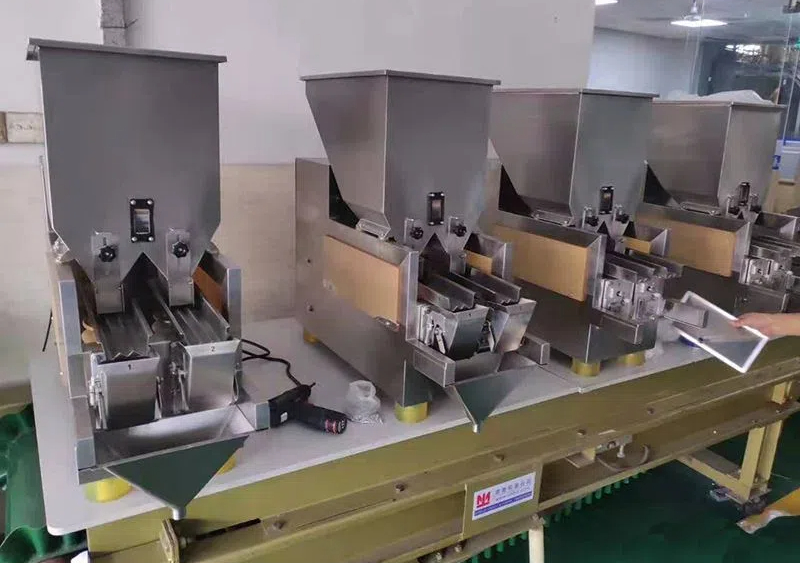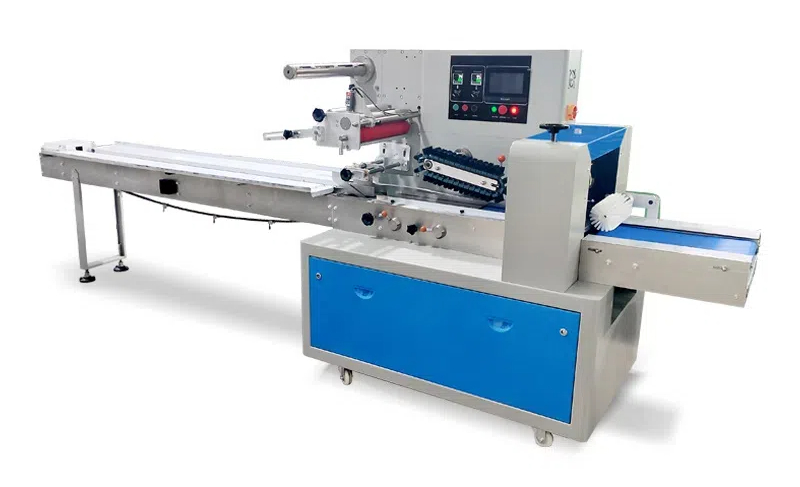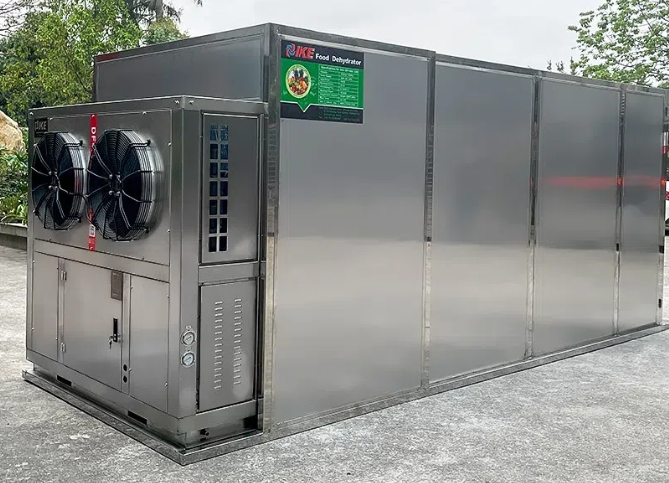
Content Menu
● Introduction to Dry Food Packaging Machinery
● Understanding the Importance of Dry Food Packaging
>> Types of Dry Food Packing Machines
● Factors Influencing Dry Food Packing Machine Prices
>> 1. Machine Capacity and Speed
>> 2. Automation Level
>> 3. Customization and Features
>> 4. Material Compatibility
>> 5. Brand and Quality
● Price Ranges for Dry Food Packing Machines
>> Entry-Level Machines
>> Mid-Range Solutions
>> High-End Industrial Equipment
● Maximizing Value: Considerations Beyond Price
>> 1. Return on Investment (ROI)
>> 2. Versatility and Scalability
>> 3. Energy Efficiency
>> 4. Maintenance and Support
>> 5. Compliance and Safety
● Emerging Trends in Dry Food Packaging Technology
>> 1. Smart Packaging Solutions
>> 2. Sustainable Packaging Options
>> 3. Modular and Flexible Systems
>> 4. Enhanced Sanitation Features
● Making the Right Choice: Steps to Selecting Your Dry Food Packing Machine
● Conclusion: Investing Wisely in Dry Food Packaging Technology
● Frequently Asked Questions
>> Q1: What is the average lifespan of a dry food packing machine?
>> Q2: How can I determine the right capacity for my dry food packing machine?
>> Q3: Are there any financing options available for purchasing dry food packing machines?
>> Q4: How much training is typically required to operate a dry food packing machine?
>> Q5: What are the key maintenance requirements for dry food packing machines?
Introduction to Dry Food Packaging Machinery
In today's fast-paced food industry, efficient and reliable packaging solutions are essential for businesses of all sizes. Dry food packing machines have become indispensable tools for companies looking to streamline their operations, ensure product freshness, and meet consumer demands. This comprehensive guide will explore the world of dry food packing machine prices, helping you navigate the complex landscape of industrial packaging solutions.
Understanding the Importance of Dry Food Packaging
Dry foods, including grains, powders, snacks, and dehydrated products, require specialized packaging to maintain quality and extend shelf life. The right packaging not only protects the product from moisture and contaminants but also plays a crucial role in branding and consumer appeal. Investing in a high-quality dry food packing machine is therefore critical for businesses looking to succeed in this competitive market.
Types of Dry Food Packing Machines
Before delving into pricing, it's essential to understand the various types of dry food packing machines available:
1. Vertical Form Fill Seal (VFFS) Machines
2. Multi-head Weigher Systems
3. Vacuum Packaging Machines
4. Bag-in-Box Cartoning Machines
5. Auger Fillers for Powders
Each type of machine serves specific packaging needs and comes with its own set of features and price points.

Factors Influencing Dry Food Packing Machine Prices
The cost of a dry food packing machine can vary significantly based on several factors:
1. Machine Capacity and Speed
High-speed packaging equipment capable of handling large volumes typically comes with a higher price tag. However, the increased productivity can often justify the investment for larger operations.
2. Automation Level
Fully automatic dry food packaging machines are generally more expensive than semi-automatic or manual options. The level of automation directly impacts labor costs and production efficiency.
3. Customization and Features
Machines with advanced features such as touchscreen controls, remote monitoring, and integrated quality control systems will be priced higher than basic models.
4. Material Compatibility
Packaging machines designed to handle a wide range of materials or specialized products may come at a premium due to their versatility or specific engineering requirements.
5. Brand and Quality
Established brands with a reputation for reliability and after-sales support often command higher prices. However, the long-term benefits of quality equipment can outweigh the initial cost difference.

Price Ranges for Dry Food Packing Machines
While prices can vary widely based on the factors mentioned above, here's a general overview of what you can expect:
Entry-Level Machines
Small businesses or startups might find suitable options in the $10,000 to $30,000 range. These machines typically offer basic functionality and are suitable for low to medium production volumes.
Mid-Range Solutions
For medium-sized operations looking for more advanced features and higher capacities, prices can range from $30,000 to $100,000. This category often includes versatile VFFS machines and multi-head weigher systems.
High-End Industrial Equipment
Large-scale industrial packaging solutions, complete packaging lines, or highly specialized machines can cost anywhere from $100,000 to $500,000 or more. These systems offer the highest levels of automation, speed, and precision.
Maximizing Value: Considerations Beyond Price
When evaluating dry food packing machine prices, it's crucial to look beyond the initial cost and consider the total value proposition:
1. Return on Investment (ROI)
Calculate the potential savings in labor costs, reduced waste, and increased production capacity. A higher-priced machine that significantly boosts efficiency may offer a better ROI in the long run.
2. Versatility and Scalability
Consider machines that can handle multiple product types or be easily upgraded to accommodate future growth. This flexibility can save money on additional equipment purchases down the line.
3. Energy Efficiency
Modern, energy-efficient packaging machines may have a higher upfront cost but can lead to substantial savings on operational expenses over time.
4. Maintenance and Support
Factor in the availability and cost of spare parts, as well as the quality of technical support offered by the manufacturer. Reliable after-sales service can minimize downtime and extend the machine's lifespan.
5. Compliance and Safety
Ensure that the machine meets all relevant food safety regulations and industry standards. Investing in compliant equipment can prevent costly legal issues and product recalls.
Emerging Trends in Dry Food Packaging Technology
As you consider your options, it's worth noting some of the latest trends in dry food packaging machinery:
1. Smart Packaging Solutions
Integration with IoT (Internet of Things) technology allows for real-time monitoring and predictive maintenance, potentially reducing downtime and improving overall equipment effectiveness.
2. Sustainable Packaging Options
Many modern machines are designed to work with eco-friendly packaging materials, catering to the growing consumer demand for sustainable products.
3. Modular and Flexible Systems
Packaging lines that can be easily reconfigured to handle different products or package sizes are becoming increasingly popular, offering greater versatility for manufacturers.
4. Enhanced Sanitation Features
In response to heightened food safety concerns, manufacturers are developing machines with improved hygienic design and easier cleaning processes.
Making the Right Choice: Steps to Selecting Your Dry Food Packing Machine
1. Assess Your Needs: Carefully evaluate your production requirements, including volume, product types, and packaging formats.
2. Research and Compare: Investigate multiple suppliers and machine types, comparing features, prices, and user reviews.
3. Request Demos: Whenever possible, see the machines in action through live or video demonstrations.
4. Consider Total Cost of Ownership: Look beyond the initial price to factor in operational costs, maintenance, and potential upgrades.
5. Plan for the Future: Choose a machine that can accommodate your projected growth and potential new product lines.
6. Evaluate Support and Training: Ensure that comprehensive training and reliable technical support are available.
7. Check for Compatibility: Verify that the machine integrates well with your existing production line and IT systems.
8. Review Warranty and Service Agreements: Understand the terms of the warranty and available service plans to protect your investment.
Conclusion: Investing Wisely in Dry Food Packaging Technology
Selecting the right dry food packing machine at the right price is a critical decision that can significantly impact your business's efficiency, product quality, and bottom line. By carefully considering your needs, thoroughly researching your options, and looking beyond the initial price tag, you can make an informed investment that will serve your company well for years to come.
Remember that the cheapest option is not always the most cost-effective in the long run. A well-chosen, high-quality dry food packing machine can lead to improved productivity, reduced waste, and enhanced product quality – all of which contribute to a stronger, more competitive business.
As the food packaging industry continues to evolve, staying informed about the latest technologies and trends will help you make the best decisions for your packaging needs. Whether you're a small startup or a large-scale manufacturer, there's a dry food packing solution out there that fits your requirements and budget.

Frequently Asked Questions
Q1: What is the average lifespan of a dry food packing machine?
A1: The lifespan of a dry food packing machine can vary depending on factors such as usage, maintenance, and quality. On average, a well-maintained machine can last 10-15 years or more. High-end industrial equipment may have an even longer lifespan with proper care and regular updates.
Q2: How can I determine the right capacity for my dry food packing machine?
A2: To determine the right capacity, consider your current production volume, peak season demands, and projected growth. It's often recommended to choose a machine with slightly higher capacity than your current needs to accommodate future expansion. Analyze your production data and consult with packaging equipment specialists to make an informed decision.
Q3: Are there any financing options available for purchasing dry food packing machines?
A3: Yes, many equipment suppliers and third-party financial institutions offer financing options for packaging machinery. These may include leasing arrangements, equipment loans, or rent-to-own programs. Explore these options to find a solution that aligns with your company's financial strategy and cash flow.
Q4: How much training is typically required to operate a dry food packing machine?
A4: The training required depends on the complexity of the machine and the operator's prior experience. Basic training for entry-level machines might take a few days, while more complex systems could require several weeks of training. Many manufacturers offer comprehensive training programs as part of the purchase package, including initial setup, operation, troubleshooting, and maintenance procedures.
Q5: What are the key maintenance requirements for dry food packing machines?
A5: Regular maintenance is crucial for ensuring the longevity and efficiency of your dry food packing machine. Key maintenance tasks typically include:
- Daily cleaning and sanitization
- Regular lubrication of moving parts
- Inspection and replacement of wear parts (e.g., sealing jaws, belts)
- Calibration of weighing and measuring components
- Software updates for automated systems
- Scheduled professional servicing as recommended by the manufacturer
Following the manufacturer's maintenance guidelines and keeping detailed maintenance logs can help prevent unexpected downtime and extend the machine's lifespan.











